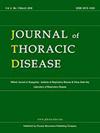摘要
背景:矽肺病是一种因长期暴露于二氧化硅而导致的职业病,在全球范围内的发病率很高,但治疗方案却很有限。本研究根据全球疾病负担(GBD)的数据分析了矽肺病的流行趋势和未来预测,旨在为公共卫生干预提供数据支持:方法:我们从 GBD 2021 年研究中提取并分析了矽肺病的发病率、死亡率和残疾调整生命年(DALYs)数据,以及矽肺病的年龄标准化率(ASR)。利用这些数据,我们从全球、地区、国家、年龄和性别五个方面描述了趋势。我们使用 Joinpoint 回归软件(V.5.2.0)计算了 1990 年至 2021 年 ASR 的年均百分比变化(AAPCs)。使用贝叶斯年龄-时期-队列(BAPC)和自回归综合移动平均(ARIMA)模型预测了 2022 年至 2050 年的矽肺病趋势:从 1990 年到 2021 年,全球矽肺病发病率、死亡人数和残疾调整寿命年数均呈上升趋势。然而,相应的 ASR 均呈下降趋势,AAPC 值分别为-1.1%(-1.1% 至-1.0%)、-2.5%(-2.7% 至-2.3%)和-2.5%(-2.7% 至-2.3%)。然而,不同国家和地区的矽肺病负担差异很大,中国、南非和智利的矽肺病年龄标准化发病率(ASIR)和年龄标准化残疾调整寿命年数(ASDR)远高于全球平均水平。此外,男性的矽肺病年龄标准化发病率和年龄标准化残疾调整寿命率普遍较高。不同社会经济水平的地区之间也存在差异,在低社会人口指数地区,男性和女性的矽肺病残疾调整寿命年数负担最低,而在中高社会人口指数地区,男性的矽肺病残疾调整寿命年数负担最高。根据 BAPC 模型预测,从 2022 年到 2050 年,矽肺病的负担将逐渐减轻:尽管从 1990 年到 2021 年,矽肺病的全球负担呈下降趋势,但它仍然是一个全球公共卫生问题。应采取有效的预防和治疗措施,应对矽肺病带来的挑战,保护工人的生命和健康。Background: Silicosis, an occupational disease caused by chronic silica exposure, has a high global burden and limited treatment options. This study analyzed the epidemiological trends and future projections of silicosis based on data from the Global Burden of Disease (GBD), aiming to provide data support for public health interventions.
Methods: We extracted and analyzed the data on the incidence, mortality, and disability-adjusted life years (DALYs) of silicosis, as well as the age-standardized rate (ASR) of silicosis from the GBD Study 2021. Using these data, we describe the trends in five dimensions: global, regional, national, age, and sex. We used Joinpoint regression software (V.5.2.0) to calculate the average annual percent changes (AAPCs) in the ASRs from 1990 to 2021. Silicosis trends from 2022 to 2050 were predicted using Bayesian Age-Period-Cohort (BAPC) and Autoregressive Integrated Moving Average (ARIMA) models.
Results: From 1990 to 2021, the global incidence of silicosis, number of deaths, and DALYs showed an upward trend. However, the corresponding ASRs all showed decreasing trends, with AAPC values of -1.1% (-1.1% to -1.0%), -2.5% (-2.7% to -2.3%), and -2.5% (-2.7% to -2.3%), respectively. However, the burden of silicosis varied significantly across countries and regions, with China, South Africa, and Chile having a silicosis age-standardized incidence rate (ASIR) and age-standardized DALYs rate (ASDR) well above the global average. In addition, the ASIR and ASDR of silicosis were generally higher among men. There were also differences between regions at different socioeconomic levels, with the DALYs burden of silicosis being lowest among males and females in low social demographic index (SDI) regions and highest among males in medium and high SDI regions. The BAPC model projected a gradual decrease in the silicosis burden from 2022 to 2050.
Conclusions: Although the disease burden of silicosis showed a decreasing global trend from 1990 to 2021, it is still a global public health concern. Effective preventive and curative measures should be taken to address the challenges posed by silicosis and to protect the lives and health of workers.

 求助内容:
求助内容: 应助结果提醒方式:
应助结果提醒方式:


